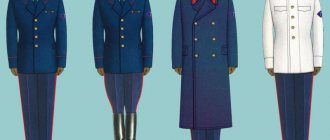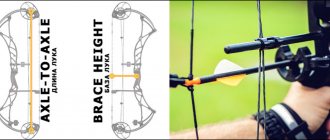Folk tuning: latches on the doors, spare tire on a hook...
The lucky owners tried to adapt the SUVs to everyday life. Instead of awnings, they made homemade hard roofs. Moreover, everything was used - sheet steel, wood, plywood.
The hood locks are extremely simple, but at the same time very reliable.
The hood locks are extremely simple, but at the same time very reliable.
Not a single door of the GAZ-69A is locked either from the inside or from the outside.
Not a single door of the GAZ-69A is locked either from the inside or from the outside.
There were no locks on the GAZ-69 - neither on the doors, nor on the hood, nor on the trunk. Private owners fitted the simplest locks into the driver's door - the kind they could buy at a hardware store. And on the other doors from the inside they installed... ordinary bolts. The same as on doors and window frames.
Features of SUV exterior tuning
The design of the SUV is made in the old Soviet style. It is not strange that the body of this car is almost never changed. This is due to the following points:
1. It is ideal for mounting large diameter wheels. In order to increase the vehicle's maneuverability, wheels with large tread are installed. By changing the suspension, you can install simply huge wheels. In addition, an important point is that the wheels are located outside the body, and the wings only emulate its continuation.
2. Refinement of the body quite often involves removing rust and applying a primer, after which paint is applied to the surface. Excessively damaged and unnecessary areas are removed and replaced. To do this, you can use a cutter or grinder.
3. The car body has a removable awning, which is mounted on a metal frame. As a rule, this moment is also restored.
4. The key feature of the car in question is the windshields that rise forward and upward. This element is also left in place so that movement during the hot summer does not cause many problems. When folding the awning, you can completely fold back the glass. For fixing, you can use special hooks. Note that many cars reach their last owner in good condition.
5. An electric fan was often installed in a Soviet-era car, which supplied air to the windshield. Warm air came only from the hood while driving. Therefore, the main modification, which does not affect the body, is the installation of additional heating.
6. The side panels of the hood could be removed in order to improve engine cooling when driving at high temperatures.
7. The car has eight seats, the driver and passenger are placed in the front, and there are two benches in the back that can accommodate 6 people. This method of arrangement is not very comfortable, so you will have to dismantle the standard seats and install new ones. Given the small wheelbase, it is enough to install 2 seats in the front and 2 seats in the rear.
8. The compact SUV in question has a tailgate that can be folded down for loading and unloading items.
9. A car with index “A” has only one fuel tank, without index – two. It should be taken into account that the standard fuel system did not have a fuel level sensor on two tanks. To check the level in the second tank from the driver's seat, you could use the dipstick to check the fuel level. An additional tank can be installed under the passenger seat.
In general, we can say that the car body is ideal for creating a cross-country SUV. Therefore, modification of the body does not cause many problems. If necessary, you can install a body kit, additional light sources - everything you need can be purchased and then installed on the car in a variety of ways.
Converts into a convertible... with difficulty
The GAZ-69A never had a hard roof as standard. This is a convertible. Or rather, a phaeton, as they said in those years (detailed classification of bodies is here).
In addition to the tarpaulin awning there were tarpaulin sides with small windows - for protection from wind and rain. Visibility through the windows was poor; driving around the city was not easy even half a century ago.
The direction of the searchlight was adjusted through the valve on the left door.
The direction of the searchlight was adjusted through the valve on the left door.
In the summer, the protective side panels from the front doors were removed. By removing all four side panels, the roof can be completely lowered. And it’s better to call a friend for help - even a strong car enthusiast can’t handle it alone.
There is another interesting detail on the left front door - a window in the canvas. According to legend - in order to show documents at the checkpoint of a military unit. In fact - to control the searchlight. As it seemed to me in my youth, this is one of the most romantic details of the “goat”.
GAZ-50
After the migration of the 69th to Ulyanovsk, several dozen shortened in-plant GAZ-50 tractors were assembled from the backlog of parts at GAZ. The wheelbase was shortened to 1800 mm by cutting out a one and a half meter fragment from the frame in the area of the transfer case. The engine remained standard, but the gearbox was replaced with a four-speed one from GAZ-63. The rear axle, clutch and front beam were borrowed from the GAZ-51A . Along the way, the track was shortened to 1345 mm, thereby obtaining a very maneuverable tractor.
How to tame a goat
You still need to know how to drive this car. If you have to go off-road, at least slightly damp grass with hills and lowlands! — the front axle should be turned on in advance. Or better yet, a downshift. By the way, you need to engage the lowering gear only after connecting the front axle - otherwise you can overload and even disfigure the transmission. The engine power is low - 52 horsepower. And from the point of view of traction, it is most convenient to drive in the second lower gear.
The trunk (aka cargo compartment) is small. And there should still be a spare tire in it.
The trunk (aka cargo compartment) is small. And there should still be a spare tire in it.
You understand right away why he was nicknamed “the goat”: the car jumps desperately. Especially if it is not loaded properly. But the GAZ-69 is designed for 500 kg.
GAZ-19, GAZ-19A
GAZ-19A
In 1955, experimental vans GAZ-19 and GAZ-19A were built. They had a completely all-metal body, a load capacity of 600 kg and drive only to the rear axle. The car with the letter A was distinguished by the presence of side windows. It was assumed that the vehicles would be used as delivery or postal vans, but they never went into production.
Rightfully popular
GAZ-69, despite all the nicknames, was one of the most “correct” and harmonious cars in our history. In the sense that the form of the GAZ-69 fits perfectly with the content and corresponds to the capabilities of the car.
- Read about Nikita Khrushchev’s favorite cars, which were convertibles and SUVs, here.
GAZ-69: convertible with latch doors
Zaporozhets and GAZ-69 are being revived in Russia
A small car is being developed in Russia with allusions to the Zaporozhets, the legendary Soviet small car produced in the Ukrainian SSR and then in Ukraine from 1960 to 1994. A utilitarian SUV will also be built on the same new modular platform; its design will be based on an equally iconic model for Russia, the GAZ-69. This all-wheel drive army and civilian vehicle was produced by GAZ and UAZ from 1953 to 1972. “Kozlik”, so nicknamed for its driving habits, was exported to more than fifty countries of the world due to its low price and outstanding all-terrain qualities. Both new cars, which are 30–40% developed (R&D stage), received the working name “Leader”, crossover and SUV, respectively.
The development of both cars is carried out on the basis of the laboratory of agricultural vehicles of the Russian Agrarian University. K.A. Timiryazev with the participation of the Research Institute of Automotive Designs. The immediate leaders of this project are the head of the Timiryazev University laboratory, Professor Tengizi Dzotsenidze, and his doctoral student Denis Zagarin, deputy director of the NAMI Automotive Institute.
Dzotsenidze in a conversation with Izvestia, the o-SUV is a car that is philosophically close to the idea of the GAZ-69, without specific borrowings in design. But the urban crossover planned on its basis will be stylistically reminiscent of the Zaporozhets, albeit rethought taking into account modern design trends.
— The car we are talking about will definitely not be a “Zaporozhets” in the literal sense of the word, if only because it will not be produced in Zaporozhye. It will be linked with the “Zaporozhets” by certain external forms, reminiscent of this iconic car,” explains the interlocutor.
Despite the off-road potential, it is assumed that both cars will not be framed, and the function of the supporting system will be performed by a metal frame. Light body panels made of polymer materials will be hung on top of it. Thanks to this, the car will be relatively light: the total curb weight is 750 kg. The planned dimensions of the SUV are 3500x1700x1700 mm (length, width, height). Wheelbase - 2660 mm.
The power unit (motor and gearbox) of the cars is located transversely at the front, which will facilitate the implementation of front-wheel drive as the main one, rear-wheel drive will be connected at the driver’s request, and without the usual levers for many old SUVs, but using a button in the cabin. The power take-off for the rear axle will be provided by an original (the scientists’ own development) transfer gearbox. The rear seat can be folded down or removed altogether to increase luggage space. The body can be transformable, with a removable hard top.
Already in the basic equipment, the car will receive ABS, power steering (hydraulic or electric - there is no solution yet), front airbags for the driver and front passenger. The developers plan to use a 65-horsepower turbodiesel unit as the base engine, with a choice of two transmissions - manual and automatic. One of the challenges facing the project is the motor.
— Diesel fuel in rural areas is more affordable than high-octane gasoline. But here, unfortunately, there is one point: a diesel engine of this class is not produced in Russia. In this regard, there are several solutions: master the production of motors with a foreign partner or do it yourself, taking into account that this competence is not superfluous for our country, explains Dzotsenidze.
The developers remind us that there are many examples in the automotive industry where bestsellers of past years, having been reborn again, have gained popularity. Thus, in 1997, Volkswagen revived its own legend of the second half of the 20th century, the compact Beetle. Although the old version of the Beetle was produced in Latin America until 2003, in Europe at that time the German “bug” had become a rarity. The BMW concern, which gained control over the English company MINI in 1994, released the first model of this brand, rethought in a modern style, in 2001, which aroused great interest among motorists. In 2007, Fiat revived the budget compact 500 using exactly the same scheme.
For both “Leaders”, computational studies of the frames, work on the design of individual elements have already been completed, the layout of the machines has been determined, and there is already certainty about equipping with some units. According to Dzotsenidze, R&D on the project has been completed by 30–40%, given that the work is being carried out without any separate funding. The finished project, according to engineers, may be of interest to potential investors from among domestic car factories. The Automobile Design Research Institute already has several completed projects that have been brought to production line. In particular, a new cabin and hood for tracked tractors of the Volgograd Tractor Plant, a multifunctional special vehicle for transport infrastructure and farms Silant, engineering for the GAZ Group in the Ermak (Lawn Next) projects and Ural trucks. However, the developers admit that due to the crisis, automakers are now not looking for new developments.
— There are no orders yet. As we are told, everyone is waiting for the economic situation to improve. But even if we don’t have orders, we don’t stop working, but work on the scientific and technical groundwork,” explained Dzotsenidze. — Our machine can be useful both in various branches of industrial production, and in the fields of trade, services, tourism and services, as part of the development of rural areas in their social component, and ensuring population mobility.
The interlocutor is convinced that thanks to the deep localization of these cars, it will be possible to make an inexpensive car, primarily accessible to rural residents. The planned price of “Vozhakov” is 290 thousand rubles; an urban crossover with a design in the style of “Zaporozhets” will be a cheaper alternative to Lada Kalina, says the professor.
The Ulyanovsk Automobile Plant (part of Vadim Shvetsov's Sollers group) was unable to provide prompt comment to Izvestia when asked about the need to develop such a car. It was previously reported that UAZ will update the UAZ-452 by 2022 - the most affordable (from 365 thousand rubles) all-wheel drive vehicle now, extremely popular among residents of rural areas. The Gorky Automobile Plant, which once gave birth to the Kozlik, is not currently looking for a replacement for it.
— The GAZ-69 is perceived by many as a purely passenger car, but in fact, one of its two main modifications was what today we would call a “minibus.” There were 6 people on two side benches in the back, and two more on the front seat in the cabin. Today, Gorky Auto produces a line of real frame SUVs "Sobol 4x4" (a minibus on a light-duty chassis - Izvestia), which in their functionality cover those areas where the Kozlik was once used, the GAZ group told Izvestia.
“If they manage to create a cheap, easy-to-use and reliable car at the stated price, then it will be in certain demand. Although it must be admitted that now consumer demand, even in areas remote from large cities, has shifted towards models with more complex consumer qualities,” suggested VTB Capital auto industry analyst Vladimir Bespalov.
UAZ-456 semi-trailer
Photo of UAZ-456 semi-trailer
Experienced truck tractor UAZ-456
with a two-axle semi-trailer UAZ-749. It differs from the GAZ-69 by installing a fifth wheel coupling instead of the rear part of the body, and by the presence of a UAZ-749 semi-trailer with a carrying capacity of 2 tons.
Factory tests in harsh conditions with a mileage of 12,500 km, carried out in May 1948 under the leadership of the permanent leading GAZ-69 tester, engineer A.F. Romachev, showed that the new car generally satisfies the requirements placed on it. It had a dry weight of 1363 kg, loaded - 1470 kg, with a full load - 2110 kg. The towing properties of the vehicle were very high: 69.9% of the total weight without a trailer and 50.7% with a trailer, to the detriment of the maximum speed - only 75 km/h (due to the low specific power). Later, the traction forces were reduced to acceptable values (1350 kgf on the ground), and the speed was increased. The ascent angle on dry turf reached 34° (with a trailer - 23°), the descent without skidding - 30°. It confidently overcame heavy off-road conditions with a layer of mud up to 0.25 m (with chains - 0.3 m) and fords up to 0.7 m deep. As soon as the GAZ-69 was born, it began to be actively tested in extreme conditions. So, in the spring of 1949, as a command vehicle, he took part in the famous GAZ-63A and ZIS-151 run on absolute off-road. Being a car of a lighter category, it withstood these tests, where the three-axle “irons” of the ZIS-151 were stuck tightly, just like the veteran GAZ-67B, not to mention the qualifying GAZ-53. It was a triumph of the “Gazov” school of all-terrain vehicle designers, which had developed towards the end of the war. The GAZ-69 overcame fresh snow up to 0.4 m deep, compacted spring snow up to 0.3 m, ditches up to 0.55 m and a width of 0.4 m. Comparative tests of it together with the GAZ-67B carried out in the spring of 1950 showed that minimum fuel consumption on the highway decreased from 13.9 to 10.9 liters (with a trailer - 12.1 liters) - a consequence of a more economical engine, despite the increased total weight of the vehicle.
Photo modification of GAZ-69 APA-12
During the development process, the engine power increased to a guaranteed 55 hp. (at stands - 58.5 hp). This, in turn, increased, although less than required, the torque - up to 12 7 kgm (at stands - up to 13.6 kgm). An oil cooler and a six-blade fan were installed, which completely eliminated overheating in difficult road conditions; gear ratios in the transmission have been adjusted; A synchronized gearbox from the GAZ-12 ZIM was used. Outdated and insufficiently reliable axles, inherited mainly from the GAZ-11 and GAZ-61, were replaced with generally accepted designs with flanged, fully unloaded axle shafts like the GAZ-63. The geometry of the used conical pair of the main gear from Pobeda (5.125) was used. More rigid main gear housings of the “Split” type were used, developed by V.S. Solovyov (future chief designer of VAZ) for the modernized Pobeda, but never implemented on it. In addition, a two-satellite one-piece differential box from the GAZ-12 “ZIM” was used. From it comes a more advanced steering mechanism, making it easier to control. The disc hand brake was replaced with a drum one. The frame was strengthened, especially in the area of the 1st cross member. We installed standard round control devices for army equipment.
Photo of GAZ-69 without awning
In May 1951, a new version appeared - the GAZ-69A with a 5-seater passenger 4-door model "77" body. The weight of the car, naturally, increased by an average of 60 kg, the length increased by 30 mm, and the width by 35 mm. height - 60 mm. Maximum speed
increased to 90 km/h, the minimum was only 3.6 km/h (with a trailer - 3 km/h), and the average speed on a dirty country road was 20...25 km/h (with a trailer - 15...20 km/h h).
The control fuel consumption on the highway decreased to a record value for passenger all-terrain vehicles - 10.4 liters (with a trailer - 11.9 liters). By government decision, from the end of 1954, production of the GAZ-69 began to be transferred to the significantly expanded and refurbished Ulyanovsk Automobile Plant (UAZ), returned from the radio industry system and since then specializing in the design and production of light-duty off-road vehicles. In December, the first six GAZ
-
69
. In total, from 1953 to 1956, Gorky produced 16,382 GAZ-69 and 20,543 GAZ-69A. Since 1955, they have supplied UAZ with increasing quantities of car assembly kits through cooperation.
GAZ-69 cross-sectional layout
Ulyanovsk residents fully mastered production of the GAZ-69 in 1956. To develop this area, a group of highly qualified engineering and technical workers was sent to the plant, led by chief designer P. I. Muzyukin, an active developer of many GAZ all-terrain vehicles. The results were immediate - in record time, UAZ designed and in 1957 built on the basis of the GAZ-69 the first independent and quite successful vehicle, which had no analogues in the world - a 4x4 van with a carriage layout of low carrying capacity (0.75 t) UAZ-450 with different body options, launched into production in February 1958. Since 1956, the GAZ-69 began to be successfully exported abroad (56 countries), including in a tropical version, where it also quickly gained great popularity, especially in the countries of Asia, Africa and Latin America. In Romania and China, GAZ-69s were produced without a license, in Romania under their own designation ARO-461. True, they were noticeably inferior in quality to the Soviet GAZ-69 and could not compete. During the production process, the car was continuously improved. Thus, in the 60s, they introduced a front axle with disabling wheel hubs and reinforced bearings, a more reliable differential with four satellites, installed developed pivot units, improved cardan seals, and modified the brakes. Work was carried out to improve the durability of the synchronous joints of the front wheel drive, in particular by installing reliable Trakta-YAZ type disk joints. Military
GAZ-69 was produced until 1973, when the last 275 cars were produced. In general, the successful and high-quality design of the GAZ car has fully justified itself, which has allowed this car to penetrate into all corners of our country, win the respect of drivers, serve honestly in the army and continue to be used confidently to this day. In total, UAZ produced the following vehicles: UAZ-69 - 356,624, UAZ-69A-230,185, UAZ-69AM and UAZ-69M - 10,551. Total for the two plants - 634,285 GAZ-69 of all modifications.










